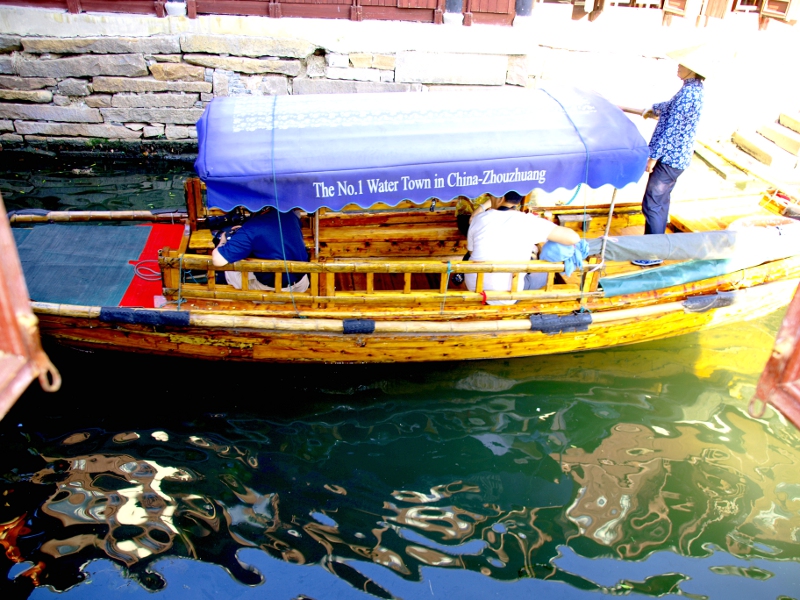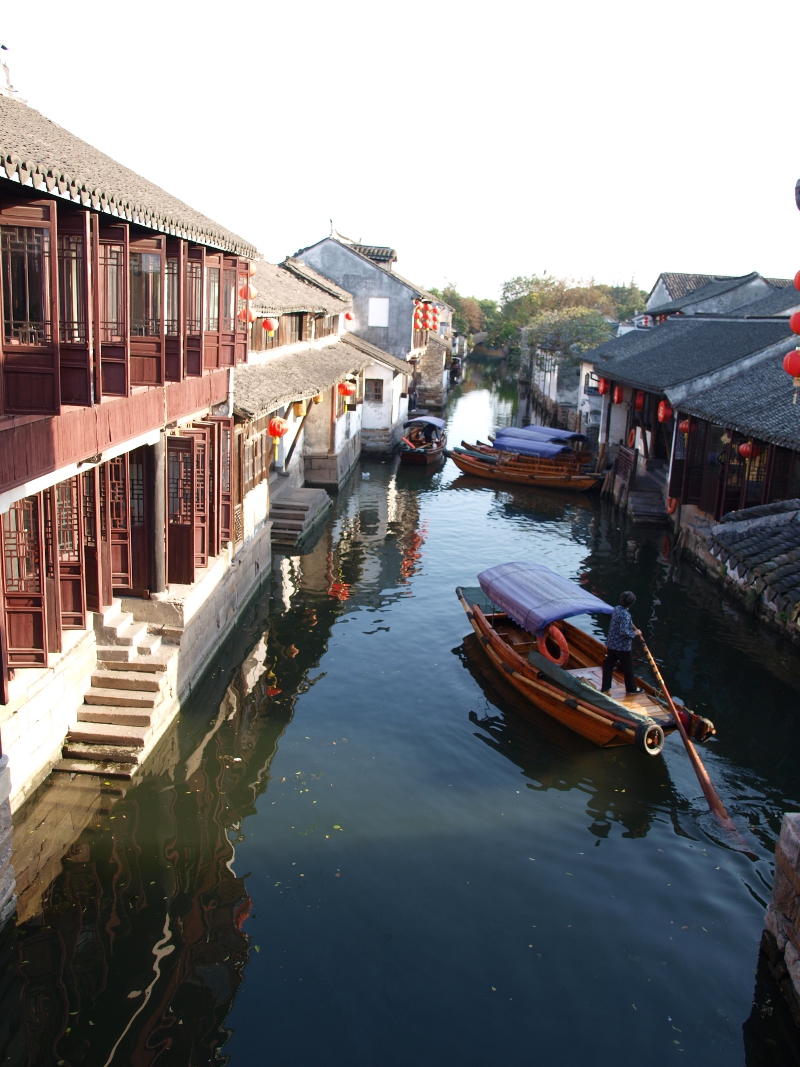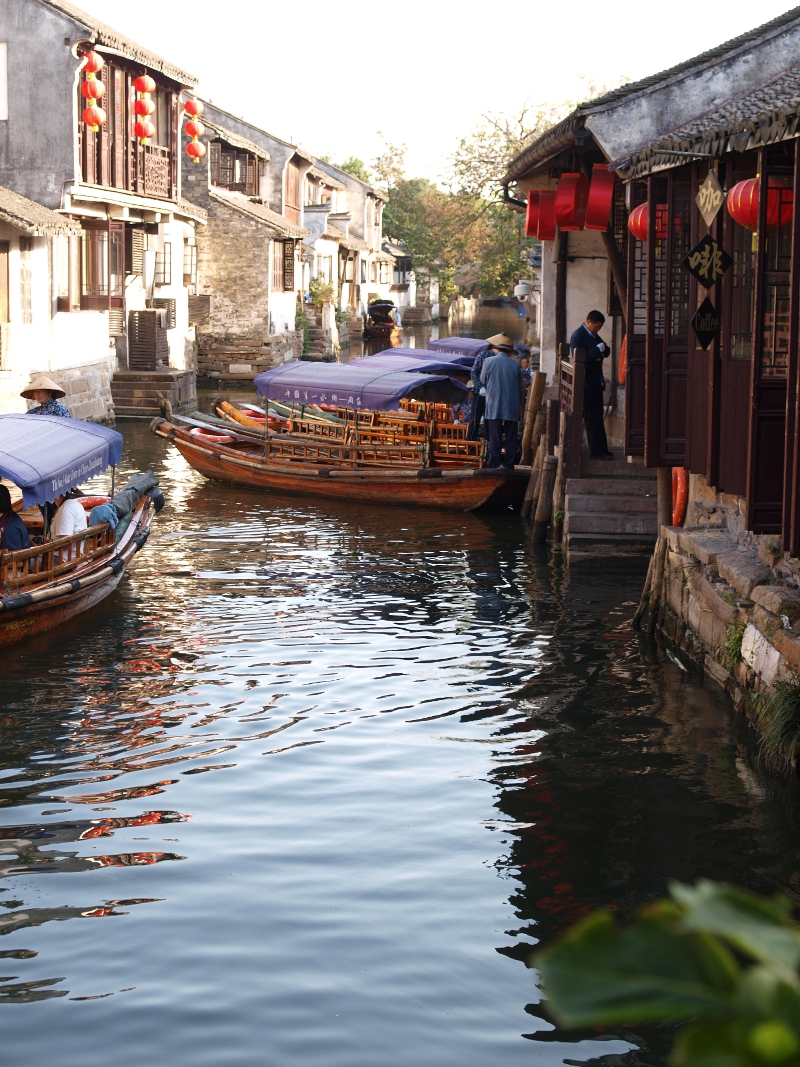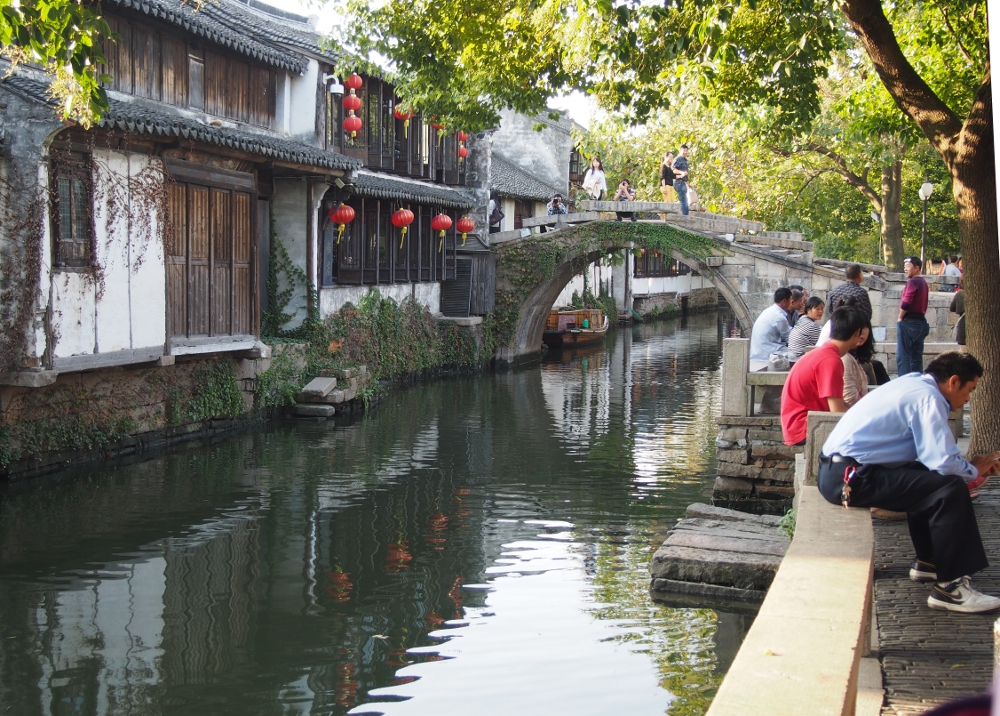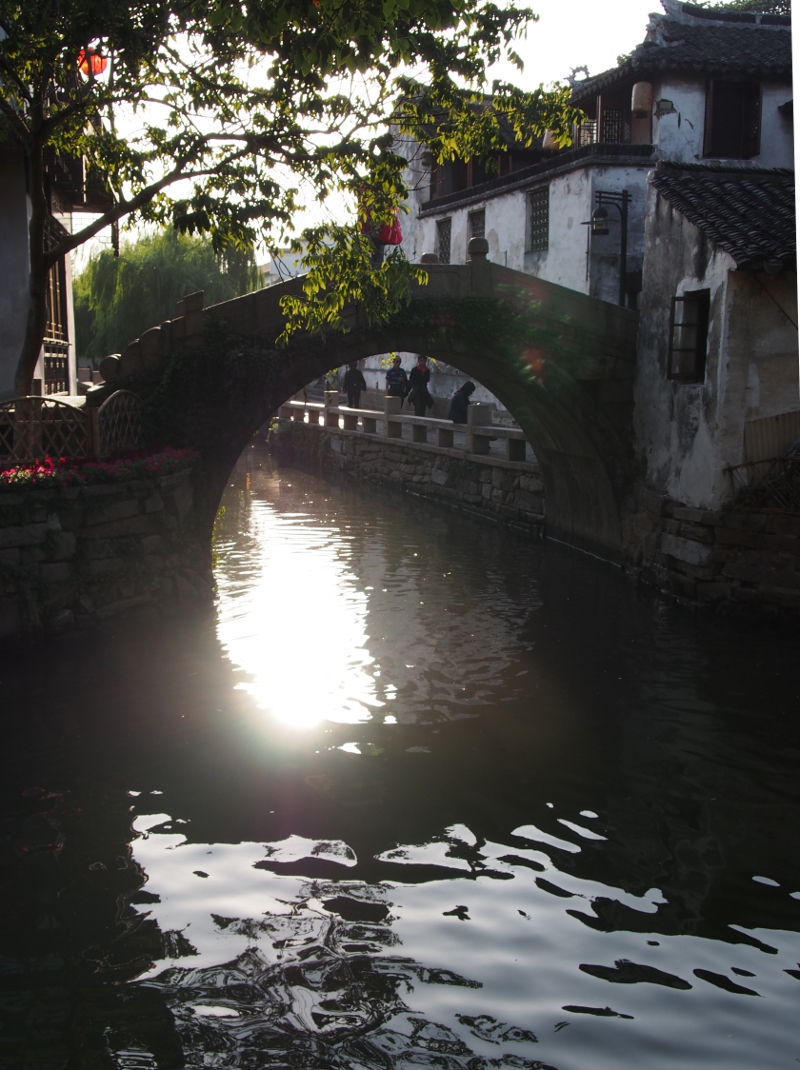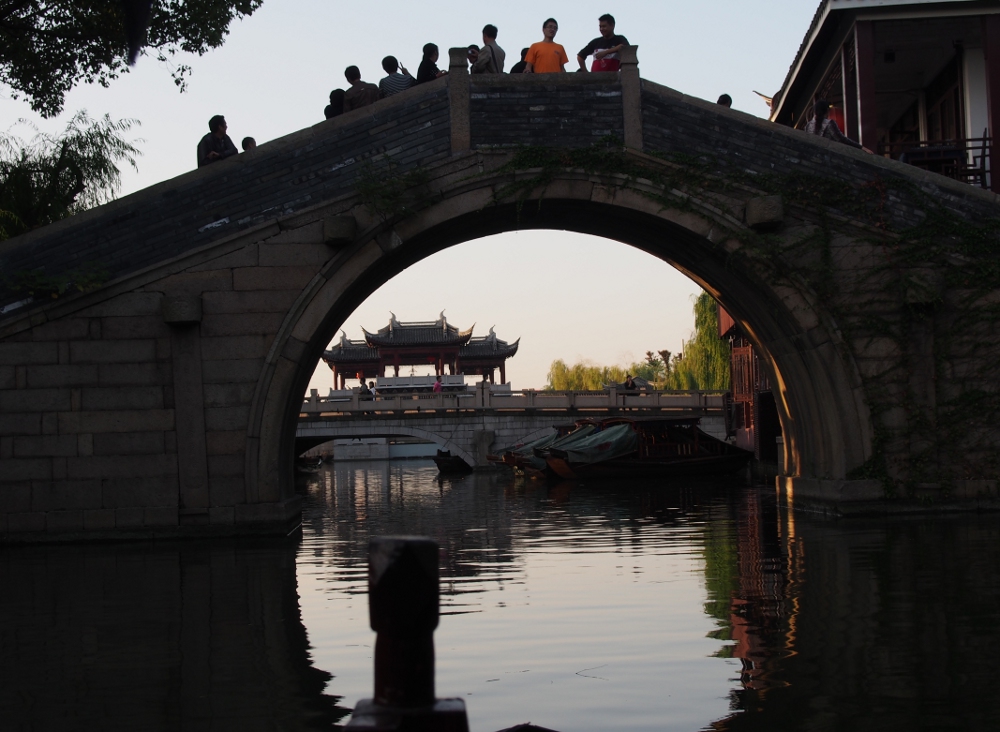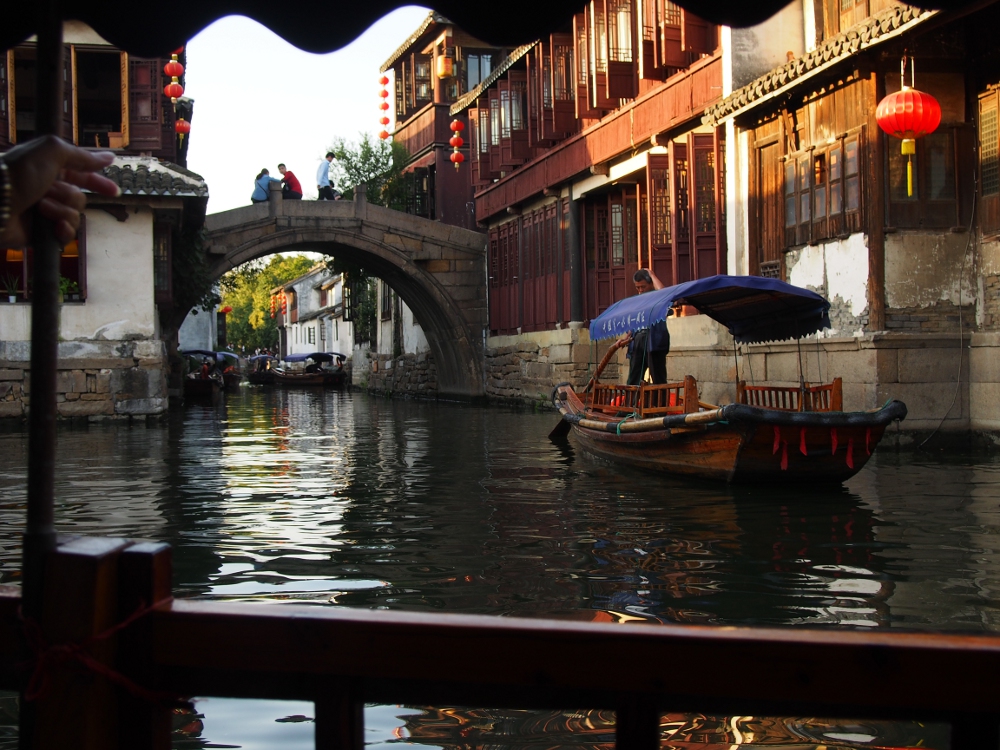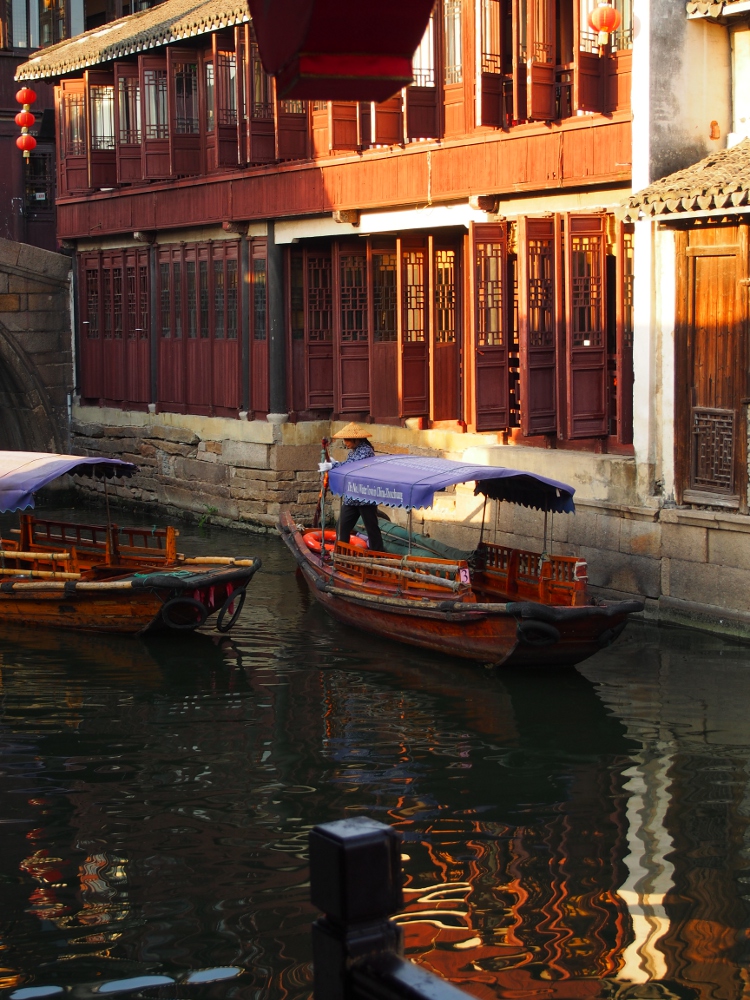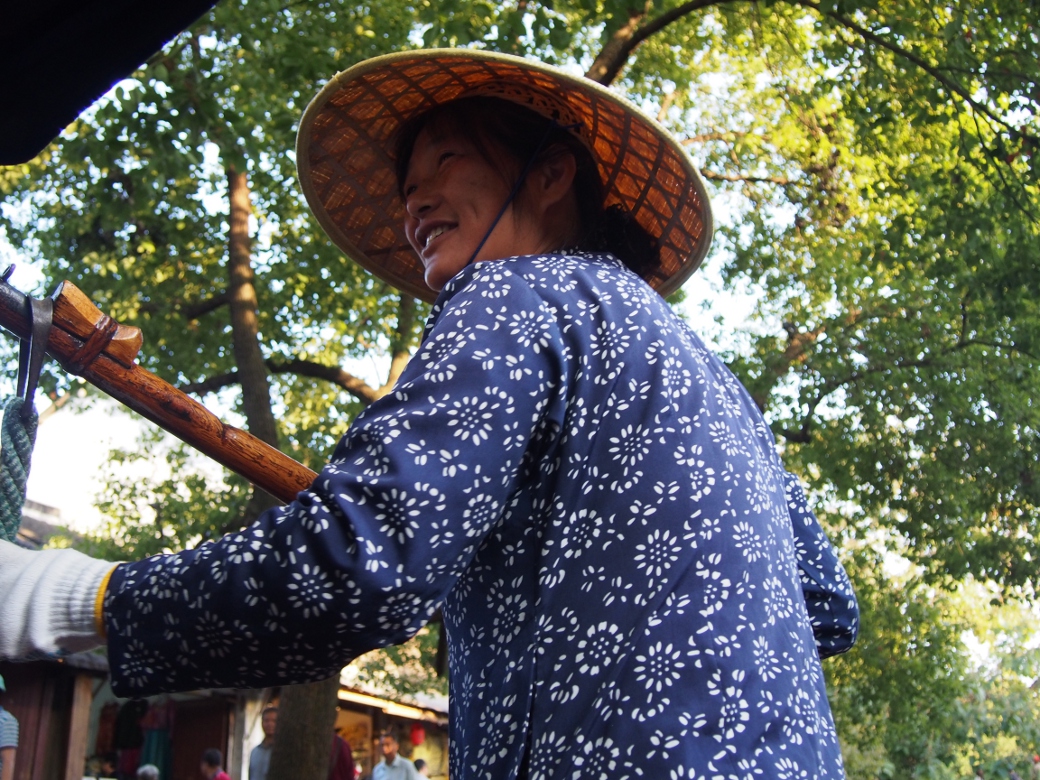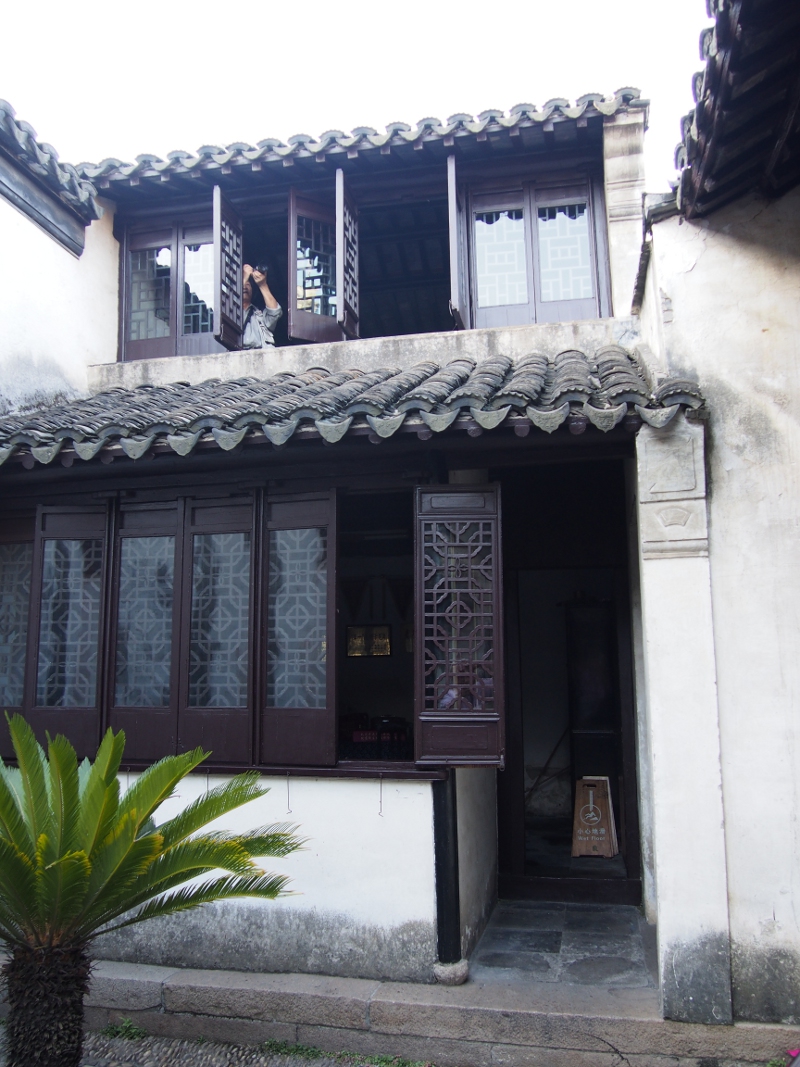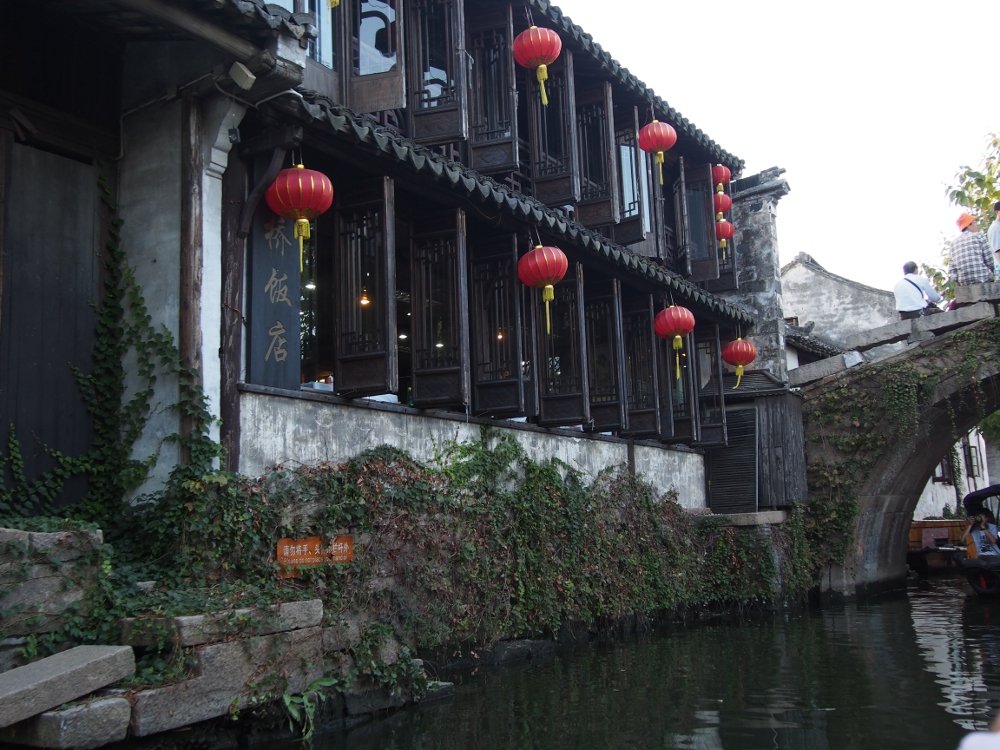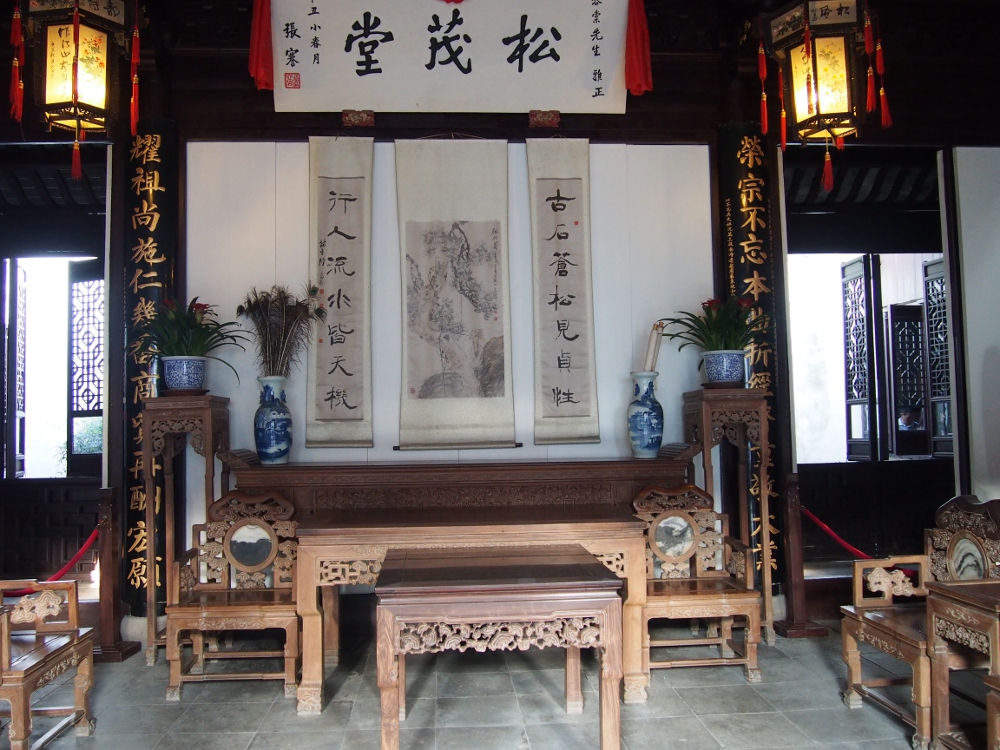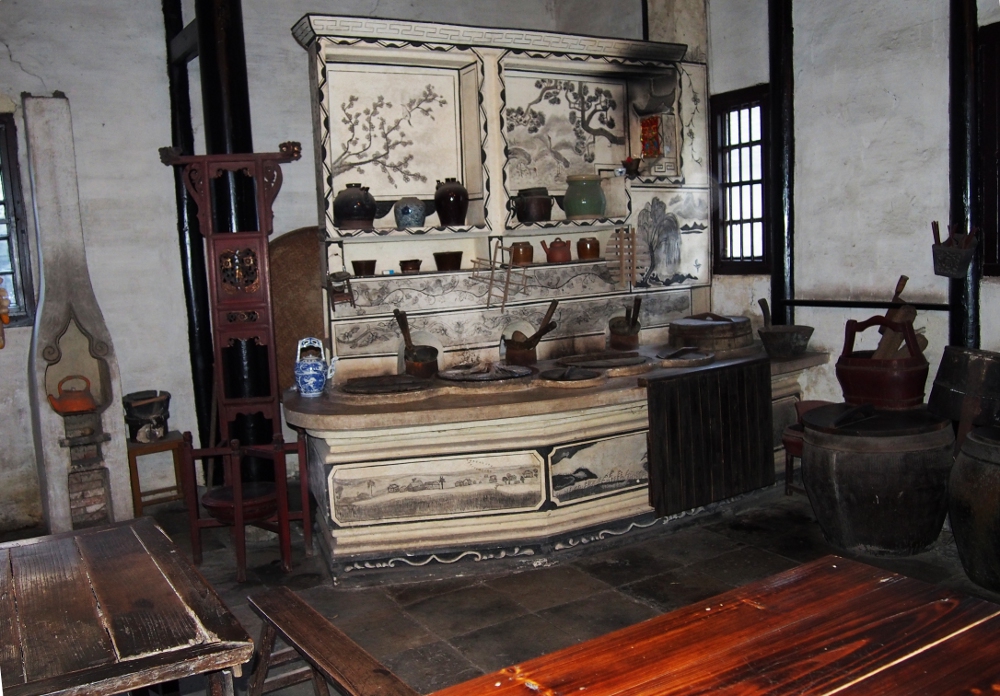ZHOUZHUANG
It is called the Venice of China and for good reason. Tours of Zhouzhuang are offered as a side trip from Shanghai and well worth the visit. We could have skipped the meal offered on our trip as it was in a western style restaurant and not to our taste. After all the wonderful meals we had in Beijing and Shanghai it was a disappointment. The town has many tourists ,mostly Chinese, so weekday visiting is encouraged.
From http://en.wikipedia.org/wiki/Zhouzhuang
Twin Bridges (Shuang qiao)
Zhouzhuang is surrounded and divided by lakes and rivers. Many stone bridges cross the rivers, showing distinctive views of the water-town. The Twin Bridges, which comprise of Shide Bridge and Yongan Bridge, are the most famous and are considered the symbol of Zhouzhuang. Built in the Wanli era (1573–1619) of the Ming Dynasty, the Twin Bridges are located in the northeast of the town. Shide Bridge is east-west and has a round arch, while Yongan Bridge is north-south and has a square arch. Crossing the two crisscross rivers (Yinzi Creek and Nabeishi River) and connecting at the middle, the Twin Bridges look like an old-style Chinese key. In 1984, 38 canvases of the notable painter, Chen Yifei, were exhibited in a New York gallery of Armand Hammer, chairman of Occidental Petroleum Corporation. “Memory of Hometown”, which depicted the Twin Bridges, was one of the items on display and has gained the world’s attention for Zhouzhuang. The painting was chosen to be the first-day cover of the United Nations‘ postage stamp in 1985.
Fuan Bridge
Located at the eastern end of Zhongshi Jie, Fuan Bridge was built in 1355 during the Yuan Dynasty. The unique trait of the Fuan is the consummate combination of the single-arch bridge and the bridge towers.
Shen House
Built in 1742 and located at the southeast side of Fuan Bridge, Shen House was the private property of the descendant of Shen Wansan, the first millionaire of Jiangnan (South of Yangtze River) in the early Ming Dynasty. The whole architectural complex is of the Qing’s style and occupies an area of more than 2,000 square meters (half an acre). Over 100 rooms are divided into three sections and each one is connected by arcades and aisles. The first is the water gate and the wharf, where Shen’s family moored boats and washed clothes. The middle part includes the gate tower, the tearoom and the main hall. Bricky gate tower carved with lively and ingenious figures which tell the historic stories or show the good wishes, make it a rare artwork. Tea room and main hall are places for serving guests, and the furnishings in here are all very elegant. The last section is the two-storied dwelling which consists of several buildings which are quite different from the main hall, more comfortable and refined in pattern and atmosphere. The painted sculpture of legendary Shen Wansan is in Datang Tower; cultural relics including ancient folk instruments are exhibited in Xiaotang Tower and Back Hall.
Take a boat ride with us and be serenaded by our gondolier.
Aside from the boat ride, there are historic homes and buildings to visit.
How do you like this kitchen?
